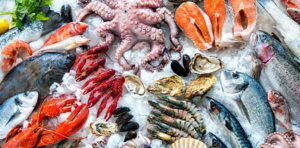Frozen Seafood: Frozen Seafood Supplies Australia
January 22, 2024
Frozen Seafood Supplies Australia offers a broad selection of quality products. Its extended shelf life reduces food waste and enables bulk purchasing for restaurants. Its availability in physical and digital marketplaces makes it more accessible to consumers.
Top executives see several critical opportunities for growth in this segment. First, they recognize the increasing demand for convenient options. For more frozen seafood suppliers au, check this out.
Quality
 Seafood suppliers in Australia provide many fish and seafood products to restaurants, hotels, cafes, etc. They source their seafood directly from fishermen and aquaculture farms, process it in their factories to client specifications, and then deliver it worldwide via air and sea freight. Their products include abalone (Wild Caught Chilled Blacklip and Greenlip), lobsters, scallops, mussels, king prawns, and oysters.
Seafood suppliers in Australia provide many fish and seafood products to restaurants, hotels, cafes, etc. They source their seafood directly from fishermen and aquaculture farms, process it in their factories to client specifications, and then deliver it worldwide via air and sea freight. Their products include abalone (Wild Caught Chilled Blacklip and Greenlip), lobsters, scallops, mussels, king prawns, and oysters.
Buying frozen seafood can also save restaurateurs money and reduce their environmental impact. While fresh seafood must be refrigerated to maintain its “fresh” identity, frozen seafood can be kept at a stable temperature until needed.
Melbourne’s leading wholesale seafood suppliers are at the Preston, Footscray, Dandenong Oakleigh, and Queen Victoria markets. In addition to their vast selection of local and imported frozen seafood, they also offer a variety of general fresh seafood. For example, Richmond Oysters offer high-quality, live Sydney rock oysters from Wapengo Lake. The oysters are hand-picked to ensure that only the highest quality shellfish are sold.
Variety
Seafood is often sold as fresh when frozen at some point in the supply chain. Buying frozen seafood prevents shoppers from purchasing spoiled products since they aren’t subjected to as much handling and processing before sale.
Southern United Seafood supplies a wide variety of shellfish and fish species, including live South Australian Rock Lobster (Jasus edwardsii), Boston Bay Blue Mussels (Mytilus edulis) & and Sydney Rock Oysters (Saccostrea glomerata). Other products include Moreton Bay Bugs, mud crabs, eastern king prawns, brown tiger prawns, endeavour prawns, banana prawns & and Queensland scallops.
They also provide a range of value-added abalone products, including rumbled green lip & and black lip abalone meat, vacuum-packed IQF abalone meat, and canned abalone meat. Their abalone is wild caught in Tasmania and processed to client specifications. In addition to these frozen seafood products, they offer a full range of fresh salmon, smoked seafood and caviar.
Cost
Seafood has become a staple of many Australian households, with the average person consuming more than 15 kilograms per year. However, this high consumption can result in higher prices for wholesale seafood at restaurants and food service venues.
As a result, it is essential to consider the price of seafood when buying it for your business. You can reduce your seafood costs by shopping online for the best deals on local wholesale suppliers like Foodbomb.
Vietnam, New Zealand, and Taiwan (Chinese) are the leading importers of frozen fish to Australia, with their combined share reaching X% in 2022. China, South Africa, Norway, Indonesia, and Namibia lagged somewhat behind, accounting for a further X%. The overall value of fish imported in 2022 reached X million dollars. The prices of fish imports have been relatively stable over the last few years. Moreover, their volume increased slightly. Frozen fish is a popular restaurant choice due to its convenience and nutritional value. For more frozen seafood suppliers au, check this out.
Environment
Seafood consumption in Australia has increased, but the implications of this trend across food systems from both health and sustainability perspectives have not been fully explored. This paper maps the fish and seafood food system by linking consumption to production to identify opportunities and challenges for promoting seafood as a healthy and sustainable diet.
The Australian seafood industry has responded to the challenge of providing consumers with accurate seafood information by introducing ‘Made in Australia’ labels on some products. However, the ACCC has found that slicing, crumbing and par-frying imported fish do not constitute substantial transformation to justify the ‘Made in Australia’ claim. This finding has raised concerns about misleading consumer information on the country of origin of frozen seafood. For more frozen seafood suppliers au, check this out.